Bronze casting has been traced back to 1800 B.C. and has been the choice of sculptors over the centuries. Bronze is one of the most enduring mediums for indoor and outdoor sculpture; some ancient Greek sculptures have even been retrieved from the bottom of the ocean almost completely undamaged. Metal casting is a technical and complex process that involves specialized materials, machines, and furnaces. Wanner Sculpture Studio uses traditional lost wax casting methods used by the ancient Greeks to the most modern technology developed by NASA engineers as well as resin bonded sand casting. The studio's art foundry has the capacity to pour 450 pounds of molten bronze in one pour.
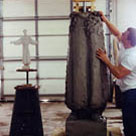
Step 1
The process of making a large-scale bronze statue begins with the commission of a statue. This involves consultations, research, and preliminary sketches in clay. Once the clay sketch, called a maquette, is approved an armature is made and clay is applied to it.
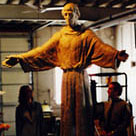
Step 2
The sculptor models the statue to his satisfaction before presenting to the client for approval.
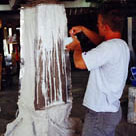
Step 3
Upon approval, the statue is ready to be cast. The first stage of the process is to divide the statue into smaller sections by pressing aluminum shims into the clay; this is to make for manageable size molds, foundry patterns, and castings.
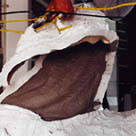
Step 4
After the entire statue is cast in plaster, the mold sections are removed from the statue and the clay is then put back into the clay containers for future use.

Step 5
The more critically detailed sections of the statue, i.e. head and hands, are cast in wax from the plaster molds to a thickness of 3/16", then wax channels called sprues and vents are added to the wax casting.
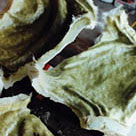
Step 6
The other molds are cast in fiberglass to the same thickness.
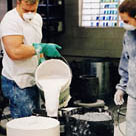
Step 7
Using the traditional solid investment process, the wax patterns are invested in refractory material then put into a burnout kiln where they are fired at 1000° F for two days.
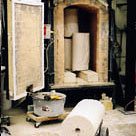
Step 8
This firing melts the wax pattern out of the mold and burns off any carbon caused by the burning wax.
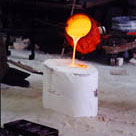
Step 9
The molds are then removed from the kiln and molten bronze is poured into the cavity left by the wax pattern.
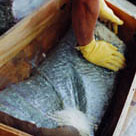
Step 10
The fiberglass foundry patterns are used to make resin-bonded sand molds. First wooden forms, called flasks, are built around the fiberglass patterns and the sodium silicate resin is mixed with silica sand and packed over the pattern.
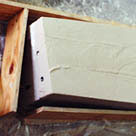
Step 11
Injecting carbon dioxide gas into the sand cures the resin-bonded sand. Once the sand becomes hard, the mold is turned over and the process is repeated to the backside of the pattern. After the backside of the mold has hardened, the flask is removed.
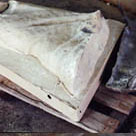
Step 12
The mold is separated and the foundry pattern is removed.
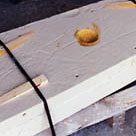
Step 13
Refractory mold wash is applied and burnt off the surface of the mold, then pouring channels, called gates, risers, and vents, are cut into the hardened sand. The mold is put back together without the foundry pattern inside, thus leaving a vacancy for the molten bronze to fill.
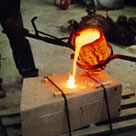
Step 14
Bronze is then melted to 2050° F and poured into the sand mold.
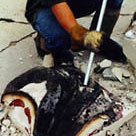
Step 15
The casting cools for a few minutes then is broken out of the sand mold.
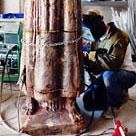
Step 16
Pouring sprues, vents, and risers are cut off of all of the castings, metal flashings on the edges are ground off and the castings are welded together.
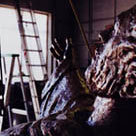
Step 17
The welds are then ground down and the entire surface of the statue is worked over to disguise the seams. The statue is then cleaned by sand blasting and finally with a wire wheel before a chemical patina is applied to darken the surface.
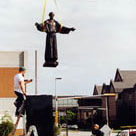

Step 18
A wax sealer is applied before the statue is delivered and installed.